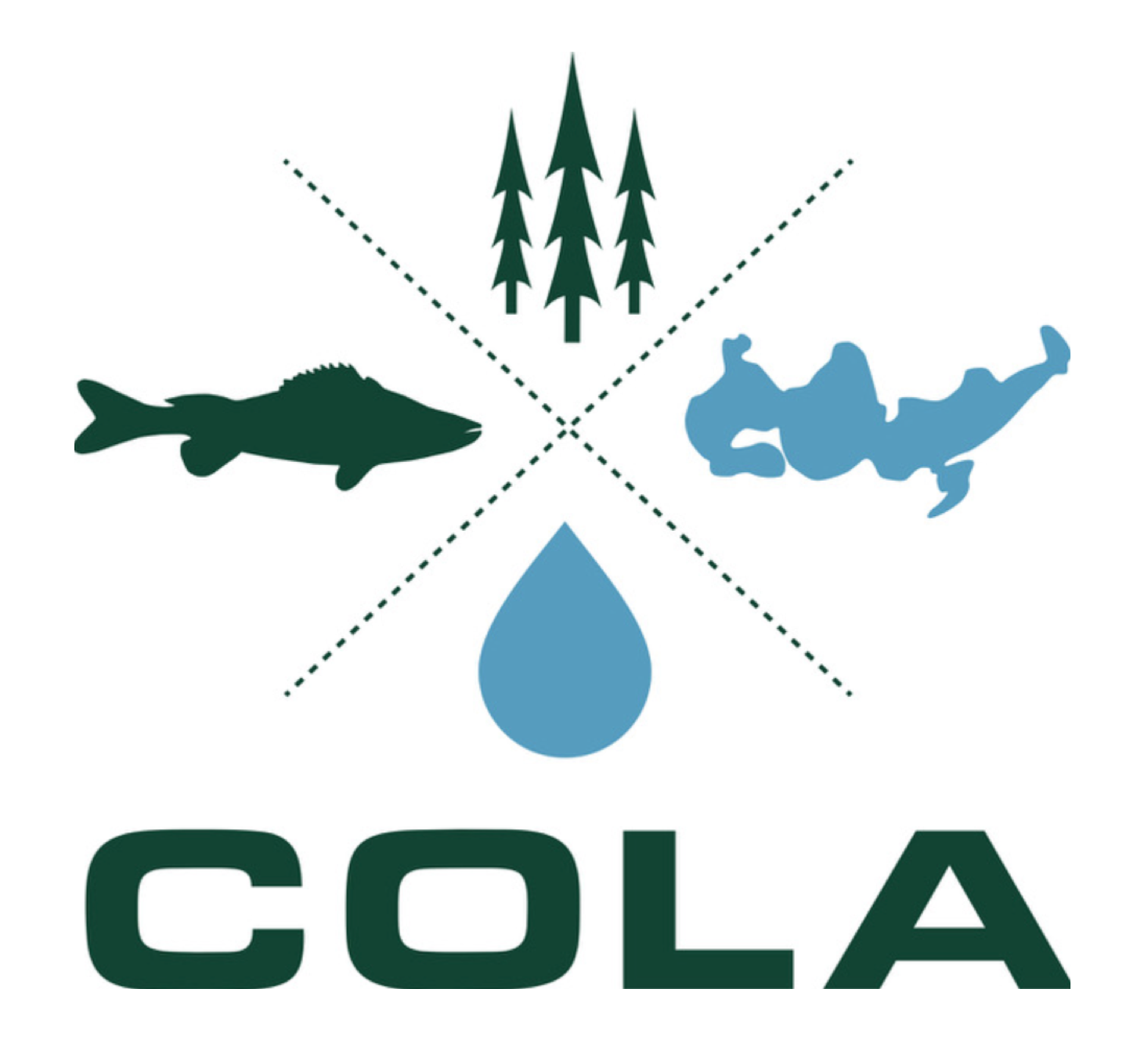The LCO Fishery
What makes Lac Courte Oreilles so special and a world-class fishing lake? It is a two-story, cold-water fishery – one of only five stratified two-story fishery lakes in Wisconsin to support both cisco and lake whitefish. Unfortunately, since 2013, perhaps earlier, there has not been season-long suitable habitat for cisco and lake whitefish. Water temperatures have been too high and dissolved oxygen concentrations too low to sustain these species, which are part of the ecosystem that once supported a renowned and sustainable musky population. While warm water temperature is mostly the result of global climate change, low dissolved oxygen is caused by locally controllable factors. The profusion of invasive aquatic plant species fueled by excessive phosphorus is the most likely culprit. More information is available here.
What COLA is doing about it
It is upsetting to look out over what seems to be the clear, pristine waters of the LCO lakes but know that what’s happening beneath the surface is devastating to the lakes’ aquatic ecosystem. COLA is trying to first reveal and then reverse the fishery’s decline by the following actions:
Water-quality Monitoring
COLA and the LCO Conservation Department have worked closely to monitor water quality in the LCO lakes for decades. Continuous, accurate data collection has been essential for developing the science relating water temperature, dissolved oxygen, and phosphorus to fishery habitat. Research by COLA and the LCOCD led directly to WDNR’s listing LCO as impaired for low dissolved oxygen in 2018 followed closely by the request for a more protective phosphorus standard.
WDNR's Fish Management Plan
The WDNR with COLA's help prepared a long-term Fish Management Plan for LCO in 2006. This plan guides fishery management efforts on big and little LCO, and the Billy Boy Flowage.
Esox Recovery Plan
Muskies Inc., Walleyes Forever, the LCO Tribe, and COLA joined together to implement WDNR’s Esox Recovery Plan – an effort to restore muskellunge as the dominant Esox species in LCO and create a more desirable muskellunge fishery for both anglers and tribal harvesters.
Musky Bay Spawning Habitat Restoration
COLA is working with WDNR and other organizations to determine the feasibility of restoring musky spawning habitat to Musky Bay. This will involve dredging and other logistical/financial challenges, but, hopefully, the project will get underway in the near future.
More …
Descriptions of a two-story fishery:
Reduced Oxythermal Habitat in a Two-Story Fishery: Implications for Phosphorus Management in a Northern Wisconsin Lake by Dendy Lofton
Lac Courte Oreilles – a Rare and Fragile “Two-Story Fishery” by Frank Pratt
Tale of Two Cities - LCO's Two-Story Story by Frank Pratt
Turnover (not the yummy blueberry kind) from The Monitor
Fish Surveys/reports:
Related Stories in Short Ears, Long Tales
Issue 4 Fishing Guide Art Malin and the 'one that got away'
Issue 11 'Keeping Lac Courte Oreilles in balance—Max Wolter knows what to do’
Issue 17 'Seining on Lac Courte Oreilles'
Issue 26 'Shining the light on our WDNR partners in Hayward'





